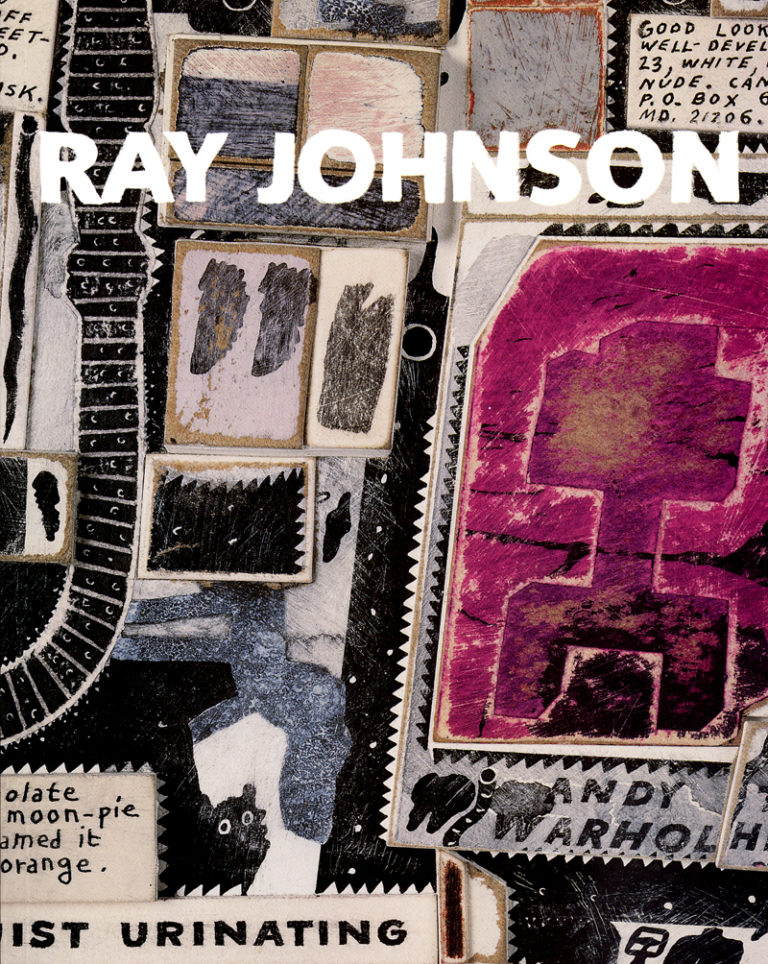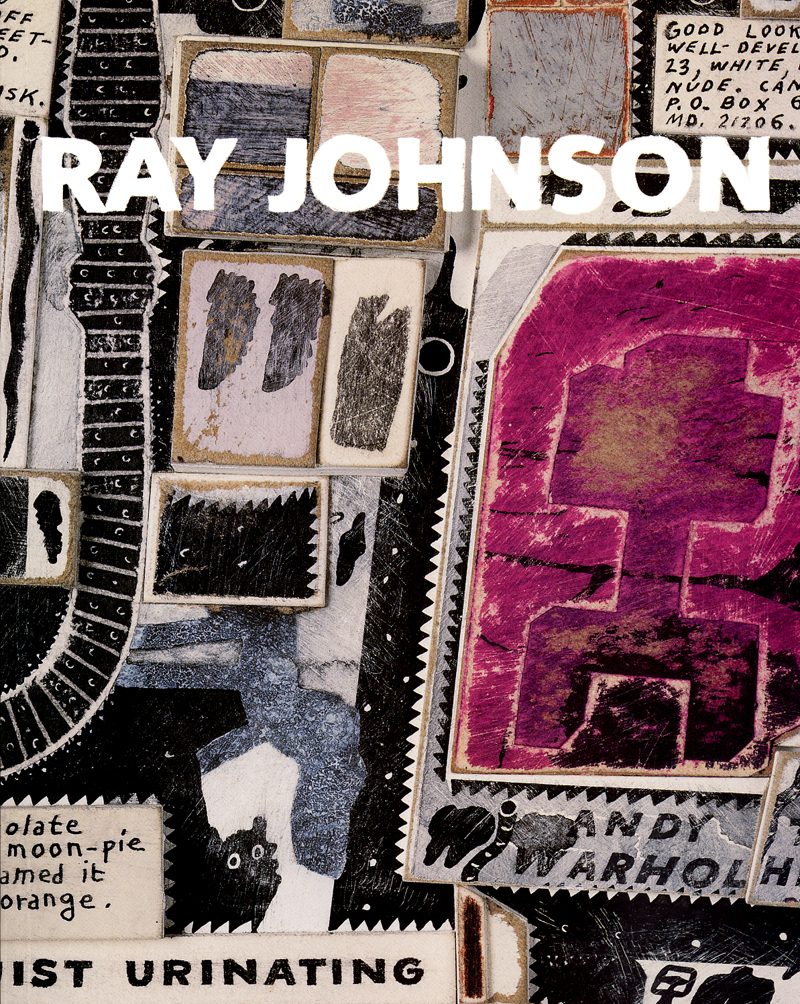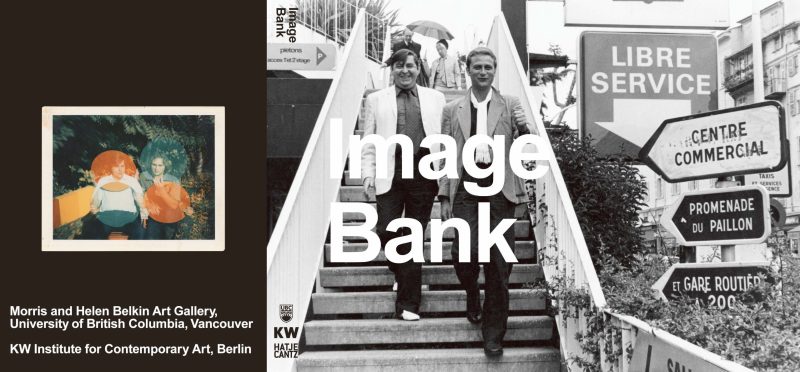8 October 1999 – 19 December 1999
Morris and Helen Belkin Art Gallery, Vancouver
How Sad I am Today… The Art of Ray Johnson and the New York Correspondence School
-
Ray Johnson
Artist -
Anna Banana
Artist -
General Idea
Artist -
Eric Metcalfe
Artist -
Michael Morris
ArtistMichael Morris (1942-2022) was a painter, photographer, video and performance artist and curator. His work is often media based and collaborative, involved with developing networks and in the production and presentation of new art activity. In his roles as curator and, primarily, as an artist, Morris was a key figure of the West Coast art scene during the 1960s. Morris studied at the University of Victoria and then at the Vancouver School of Art (now Emily Carr University), followed by graduate studies at Slade School of Fine Art at the University College London, during the 1960s. There he became interested in the work of Fluxus and the European avant-garde, which had a profound influence on his work and on the Vancouver experimental art scene in general. In 1969 he founded Image Bank with Vincent Trasov, a system of postal correspondence between participating artists for the exchange of information and ideas. The intention of Image Bank was to create a collaborative, process-based project in the hopes of engendering a shared creative consciousness—in opposition to the alienation endemic to modern capitalist society—through the deconstruction and recombination of its ideological forms. Morris was acting curator of the Vancouver Art Gallery and the Centre for Communications and the Arts at Simon Fraser University and has had many guest curatorships at other institutions. In 1973, he co-founded the Western Front—one of Canada’s first artist-run centres—and served as co-director for seven years. In 1990 he and Trasov founded the Morris/Trasov Archive, housed at the Morris and Helen Belkin Art Gallery, to research contemporary art. He has established a strong international reputation and worked for many years in Berlin. Morris has participated in artist-in-residence programs both in Canada at the Banff Centre (1990) and at Open Studio (2003) and internationally at Berlin Kustlerprogramm (1981-1998). Morris has had numerous solo and collaborative exhibitions nationally and internationally, and is the recipient of numerous awards, including the 2015 Audain Prize for Lifetime Achievement in Visual Arts, the 2011 Governor General’s Award in Visual and Media Arts and an Honorary Doctorate in 2005 by Emily Carr University of Art + Design.
Read More
-
Vincent Trasov
Artist -
Peter Schuyff
Artist -
Michael Morris
CuratorMichael Morris (1942-2022) was a painter, photographer, video and performance artist and curator. His work is often media based and collaborative, involved with developing networks and in the production and presentation of new art activity. In his roles as curator and, primarily, as an artist, Morris was a key figure of the West Coast art scene during the 1960s. Morris studied at the University of Victoria and then at the Vancouver School of Art (now Emily Carr University), followed by graduate studies at Slade School of Fine Art at the University College London, during the 1960s. There he became interested in the work of Fluxus and the European avant-garde, which had a profound influence on his work and on the Vancouver experimental art scene in general. In 1969 he founded Image Bank with Vincent Trasov, a system of postal correspondence between participating artists for the exchange of information and ideas. The intention of Image Bank was to create a collaborative, process-based project in the hopes of engendering a shared creative consciousness—in opposition to the alienation endemic to modern capitalist society—through the deconstruction and recombination of its ideological forms. Morris was acting curator of the Vancouver Art Gallery and the Centre for Communications and the Arts at Simon Fraser University and has had many guest curatorships at other institutions. In 1973, he co-founded the Western Front—one of Canada’s first artist-run centres—and served as co-director for seven years. In 1990 he and Trasov founded the Morris/Trasov Archive, housed at the Morris and Helen Belkin Art Gallery, to research contemporary art. He has established a strong international reputation and worked for many years in Berlin. Morris has participated in artist-in-residence programs both in Canada at the Banff Centre (1990) and at Open Studio (2003) and internationally at Berlin Kustlerprogramm (1981-1998). Morris has had numerous solo and collaborative exhibitions nationally and internationally, and is the recipient of numerous awards, including the 2015 Audain Prize for Lifetime Achievement in Visual Arts, the 2011 Governor General’s Award in Visual and Media Arts and an Honorary Doctorate in 2005 by Emily Carr University of Art + Design.
Read More
-
Sharla Sava, Curator
Curator
Often credited as the instigator of “mail art,” Ray Johnson (1927-95) was a foundational example for the Canadian avant-garde in the late 1960s to the early 1970s. Johnson’s elliptical puns and promotion of confused identity act as the master template for many of the self-constructed artistic mythologies of this time. Ray Johnson has never been presented in terms which allow for an understanding of his work as a significant contribution to artistic dialogues about masculinity, homosexuality and celebrity culture. The show investigates Johnson’s imagination of mass culture, theories of symbolic exchange, his gay subjectivity, his role as a “Pop” artist, and his relation to Andy Warhol. His mail-network identity, clubs, events, etc. foresee aspects of today’s cyberculture and Johnson is being increasingly recognized as such.
Ray Johnson was an important American collage and correspondence artist whose innovative artistic practice has persistently failed to garner the attention of the mainstream art press. His work brings to light the struggles of international art production as it attempted to deal with the crisis of modernist painting in the decades following World War II. Based in New York during the 1950-60s, Johnson’s contribution to the art of that era (as well as his lack of renown) has to be understood in relation to his innovative technical method. He was the seminal figure in the practice of mail art and it is through his dedicated engagement with the processes of distribution and circulation that he created an intellectual and artistic geography where practitioners could imagine and enact the wide-ranging possibilities of an artistic practice which stood playfully and strategically apart from the problematic of modernist painting.
Inspired by Johnson’s mail art communications, Canadian artists including Anna Banana, General Idea, Eric Metcalfe, Michael Morris, Vincent Trasov and Peter Schuyff could overstep the constraints of their geographic and cultural isolation and configure their own practice within the embattled terrain of the North American art world. The emergence of the Canadian avant-garde during the 1960s was shaped, in a critical and unmistakable way, by the universe which Johnson’s mail art created.
As a part of the exhibition a catalogue will include critical essays, a chronology and an exhibition check list. A website at https://belkin.ubc.ca/_archived/rayjohnson/ has been created to introduce viewers to the significant themes in the show. The site is an ongoing process and is organized in four parts which will appear over a four month period: Nothing, Blood, Collage, Death.

How sad I am today… The Art of Ray Johnson and the New York Correspondence School. Exhibition catalogue. 150 pages, colour and b/w images.
Soft cover. Essays/Writings by Michael Morris, Sharla Sava, Peter Schuyff, Muffet Jones.
$35.00 / SOLD OUT
ISBN# 0-88865-612-2 — To order contact: belkin@interchange.ubc.ca, tel. 604.822.2759, fax. 604.822.6689.
-
Ray Johnson
Artist -
Anna Banana
Artist -
General Idea
Artist -
Eric Metcalfe
Artist -
Michael Morris
ArtistMichael Morris (1942-2022) was a painter, photographer, video and performance artist and curator. His work is often media based and collaborative, involved with developing networks and in the production and presentation of new art activity. In his roles as curator and, primarily, as an artist, Morris was a key figure of the West Coast art scene during the 1960s. Morris studied at the University of Victoria and then at the Vancouver School of Art (now Emily Carr University), followed by graduate studies at Slade School of Fine Art at the University College London, during the 1960s. There he became interested in the work of Fluxus and the European avant-garde, which had a profound influence on his work and on the Vancouver experimental art scene in general. In 1969 he founded Image Bank with Vincent Trasov, a system of postal correspondence between participating artists for the exchange of information and ideas. The intention of Image Bank was to create a collaborative, process-based project in the hopes of engendering a shared creative consciousness—in opposition to the alienation endemic to modern capitalist society—through the deconstruction and recombination of its ideological forms. Morris was acting curator of the Vancouver Art Gallery and the Centre for Communications and the Arts at Simon Fraser University and has had many guest curatorships at other institutions. In 1973, he co-founded the Western Front—one of Canada’s first artist-run centres—and served as co-director for seven years. In 1990 he and Trasov founded the Morris/Trasov Archive, housed at the Morris and Helen Belkin Art Gallery, to research contemporary art. He has established a strong international reputation and worked for many years in Berlin. Morris has participated in artist-in-residence programs both in Canada at the Banff Centre (1990) and at Open Studio (2003) and internationally at Berlin Kustlerprogramm (1981-1998). Morris has had numerous solo and collaborative exhibitions nationally and internationally, and is the recipient of numerous awards, including the 2015 Audain Prize for Lifetime Achievement in Visual Arts, the 2011 Governor General’s Award in Visual and Media Arts and an Honorary Doctorate in 2005 by Emily Carr University of Art + Design.
Read More
-
Vincent Trasov
Artist -
Peter Schuyff
Artist -
Michael Morris
CuratorMichael Morris (1942-2022) was a painter, photographer, video and performance artist and curator. His work is often media based and collaborative, involved with developing networks and in the production and presentation of new art activity. In his roles as curator and, primarily, as an artist, Morris was a key figure of the West Coast art scene during the 1960s. Morris studied at the University of Victoria and then at the Vancouver School of Art (now Emily Carr University), followed by graduate studies at Slade School of Fine Art at the University College London, during the 1960s. There he became interested in the work of Fluxus and the European avant-garde, which had a profound influence on his work and on the Vancouver experimental art scene in general. In 1969 he founded Image Bank with Vincent Trasov, a system of postal correspondence between participating artists for the exchange of information and ideas. The intention of Image Bank was to create a collaborative, process-based project in the hopes of engendering a shared creative consciousness—in opposition to the alienation endemic to modern capitalist society—through the deconstruction and recombination of its ideological forms. Morris was acting curator of the Vancouver Art Gallery and the Centre for Communications and the Arts at Simon Fraser University and has had many guest curatorships at other institutions. In 1973, he co-founded the Western Front—one of Canada’s first artist-run centres—and served as co-director for seven years. In 1990 he and Trasov founded the Morris/Trasov Archive, housed at the Morris and Helen Belkin Art Gallery, to research contemporary art. He has established a strong international reputation and worked for many years in Berlin. Morris has participated in artist-in-residence programs both in Canada at the Banff Centre (1990) and at Open Studio (2003) and internationally at Berlin Kustlerprogramm (1981-1998). Morris has had numerous solo and collaborative exhibitions nationally and internationally, and is the recipient of numerous awards, including the 2015 Audain Prize for Lifetime Achievement in Visual Arts, the 2011 Governor General’s Award in Visual and Media Arts and an Honorary Doctorate in 2005 by Emily Carr University of Art + Design.
Read More
-
Sharla Sava, Curator
Curator
Related
-
Publication
1999
Ray Johnson: How sad I am today…
 Exhibition catalogue from How sad I am today...: The Art of Ray Johnson and the New York Correspondence School at the Belkin (8 October–19 December 1999) with texts by Michael Morris, Sharla Sava, Peter Schuyff and Muffet Jones. [more information and purchase]
Exhibition catalogue from How sad I am today...: The Art of Ray Johnson and the New York Correspondence School at the Belkin (8 October–19 December 1999) with texts by Michael Morris, Sharla Sava, Peter Schuyff and Muffet Jones. [more information and purchase] -
Publication
2019
Image Bank
 Image Bank explores the artistic collaboration of Michael Morris, Vincent Trasov and originally Gary Lee-Nova, including their most spectacular works – extended performances with props, such as Colour Bar Research (1970-78) and Mr. Peanut’s mayoralty campaign (1974) in which Vincent Trasov as Mr. Peanut ran for mayor of Vancouver – alongside their extensive mail-art exchanges with other networkers such as Robert Filliou, General Idea, Ant Farm and Ray Johnson’s New York Correspondence School. [more information and purchase]
Image Bank explores the artistic collaboration of Michael Morris, Vincent Trasov and originally Gary Lee-Nova, including their most spectacular works – extended performances with props, such as Colour Bar Research (1970-78) and Mr. Peanut’s mayoralty campaign (1974) in which Vincent Trasov as Mr. Peanut ran for mayor of Vancouver – alongside their extensive mail-art exchanges with other networkers such as Robert Filliou, General Idea, Ant Farm and Ray Johnson’s New York Correspondence School. [more information and purchase] -
News
17 Jun 2021
Image Bank: Reading Room

The following are resources related to the artists in Image Bank. This list is not exhaustive, but rather comprised of suggested readings compiled by researchers at the Belkin. These readings are intended to provide additional context for the exhibition and act as springboards for further research or questions stemming from the exhibition, artists and works involved. Following the introduction, resources are arranged by artist, listed alphabetically by last name. This compilation is an evolving and growing list, so check back in the future for more additions.
[more]